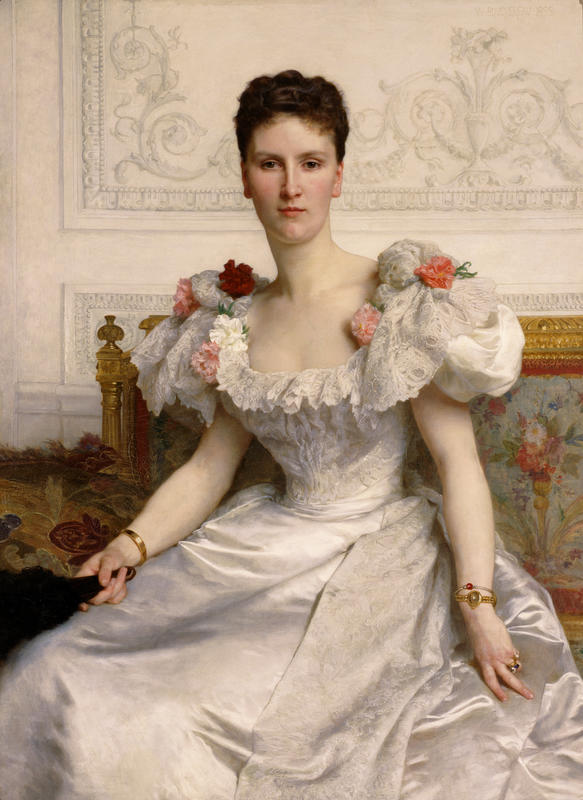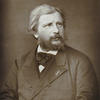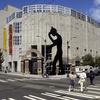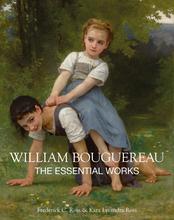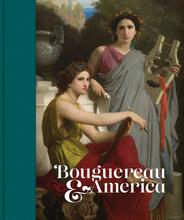More about Portrait of Madame la Comtesse de Cambaceres
- All
- Info
- Shop

Sr. Contributor
If Bouguereau ever got a report card, it would say, “follows directions well,” and, “is a pleasure to have in class.”
Let’s just say that Bouguereau wasn’t one for rocking the boat. Even though it’s way more fun and gets you a one-way ticket into the art history books, breaking the rules isn’t for everyone. Despite working in Paris during the introduction of the avant-garde, Bouguereau ignored the vile innovations of the Impressionists. This strict rule-following may or may not have been a result of his strict Catholic upbringing.
Even at the turn of the 20th century during the fin-de-siècle, he was a tried and true Salon painter. Unlike many of his contemporaries, like Toulouse-Lautrec, Bouguereau stuck to the academic traditions that paid for his meals. But Bouguereau wasn’t the only one clinging to these dying traditions. Other Salon painters, like Jules Breton and Rosa Bonheur, were also adamant realists, even though their realism wasn’t all that real. Despite their photo-realistic images, they created fictions to make the Second Empire bourgeois feel better about desperately trying to maintain their lifestyles amidst revolutions that aimed to provide rights for the working class. The horror!
These Salon artists, Bouguereau included, loved to bend the truth. Bouguereau knew that Madame la Comtesse de Cambacérès wasn’t exactly beautiful. After finishing this portrait, he complained to a critic that she had a weak chin and an up-turned nose, bragging about how he modified her pose to make these unfavorable aspects of her appearance less noticeable. This was a little trick that Bouguereau liked to call “interpreting nature,” if you catch my drift. If you want to know what life was really like for normal people, look at the work of Millet, who frankly didn’t have time for the Salon’s cleaned-up versions of reality.
So how did this utterly boring portrait get into a place like the Seattle Art Museum, which started out as an ode to Asian art? Richard E. Fuller, the co-founder and first director of the museum, extensively collected Asian artworks; however, he realized that he had to build the museum’s collection to compete with other institutions. Fuller’s father, Eugene Fuller, was basically the Daddy Warbucks of the Seattle Art Museum. He made his fortune as a doctor of urology in New York, and his wealth allowed them to buy a bunch of new artworks. Today, the Eugene Fuller Memorial Collection comprises nearly one-third of the Museum’s entire collection. Thanks, dad!
Sources
- The Art Story. “William-Adolphe Bouguereau.” Artists. https://www.theartstory.org/artist/bouguereau-william-adolphe/. Accessed 1 December 2019.
- Barksdale, Julian D. “Memorial to Richard Eugene Fuller.” In The Geological Society of America. https://www.geosociety.org//documents/gsa/memorials/v08/Fuller-RE.pdf. Accessed 1 December 2019.
- Carlson, Jeffrey. “Object of the Week: Portrait of Madame la Comtesse de Cambaceres.” SAM Blog. 14 April 2017. http://samblog.seattleartmuseum.org/2017/04/portrait-madame-la-comtesse…. Accessed 1 December 2019.
- Glueck, Grace. “To Bouguereau, Art Was Strickly ‘the Beautiful.’” In The New York Times. Art View. 6 January 1985. https://www.nytimes.com/1985/01/06/arts/art-view-to-bouguereau-art-was-…. Accessed 1 December 2019.
- Rosenfeld, Jason. “The Salon and the Royal Academy in the Nineteenth Century.” In Heilbrunn Timeline of Art History. The Metropolitan Museum of Art. October 2004. https://www.metmuseum.org/toah/hd/sara/hd_sara.htm. Accessed 1 December 2019.
- Seattle Art Museum. “About SAM.” http://www.seattleartmuseum.org/about-sam. Accessed 1 December 2019.
- Seattle Art Museum. “Portrait of Madame la Comtesse de Cambaceres.” Objects. http://art.seattleartmuseum.org/objects/2034/portrait-of-madame-la-comt…. Accessed 1 December 2019.
- Seattle Art Museum. “SAMart: A Gift to a City.” SAM Blog. 24 June 2013. http://samblog.seattleartmuseum.org/2013/06/samart-a-gift-to-a-city/. Accessed 1 December 2019.
- Tate. “Fin de Siecle.” Art Terms. https://www.tate.org.uk/art/art-terms/f/fin-de-siecle. Accessed 1 December 2019.
- William-Adolphe Bouguereau. “Biography of William-Adolphe Bouguereau.” http://www.bouguereau.org/biography.html. Accessed 1 December 2019.

